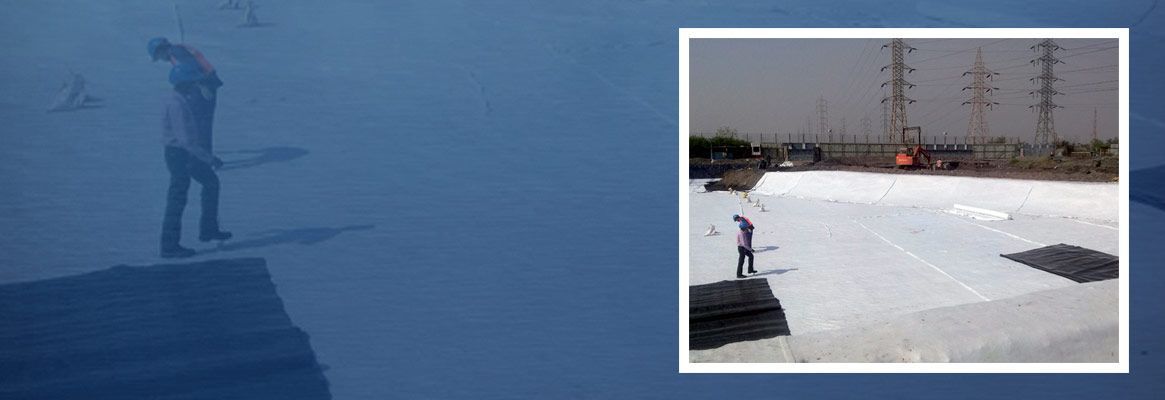In viewof their special technical attributes, geo-technical textiles or geo-textilesare being increasingly used globally to address dangers to infrastructurecaused by degradation and natural disasters. In India, too, geo-textiles aregaining greater acceptability, and with the government setting aside
With the Indian geo-textile marketsize pegged at ₹1,108 crore at a growth rate of 22 per cent by 2017, and a host ofsupportive measures by the government, prospects for the industry look brighton the South Asian peninsula as opportunities are huge due to the sheer scaleof projects.
"The scope is very good forthe next 15-20 years in India now that infrastructure projects are being gearedup," Aditya Agrawal, CEO of Jeevan Non Woven, a leading manufacturer andexporter of geo-technical textiles or geo-textiles, told Fibre2Fashion. Heunderlined that it is a segment with huge growth potential at the domestic aswell as global level.
Globally, countries have usedgeo-textiles in construction projects, road building, erosion control, etc. So,the products have a proven track record as technology for favourable use in thecountry in terms of cost effectiveness and environment non-degradation, saidAgrawal.
"Big reserves are ingeo-textile applications, where high-value textiles save costs and improvedurability of roads, river banks and landfills. Higher demands on environmentalprotection will boost the filtration segment," Eric Scholler, member ofthe executive board of Groz-Beckert, a German manufacturer of technicaltextiles equipment recently told technicaltextile.net, a Fibre2Fashioninitiative.
The global market forgeo-textiles, growing at a CAGR of 10.59 per cent between 2014 and 2019, isprojected to reach $8,632.83 million by 2019, according to a report by leadingmarket research agency Markets and Markets. The Asia-Pacific region, especiallyIndia and China, is projected to gain the major market size by value by 2019.Asia-Pacific dominated the geo-textiles market in 2013, states the report,Geo-textiles: Global trends and forecasts for 2019.
Acknowledging the significant roleof geo-textiles in addressing traditional civil engineering solutions,especially in Northeast India, the Indian government has set aside
The Union Ministry ofTextiles has with active involvement of the eight north-eastern stategovernments formulated a Scheme for Promotion and Adoption of Geo-textiles inthe Northeast where there is "clearly a high demand" in view offrequent damage to infrastructure due to heavy rain and landslides. It hasalready initiated the mechanism for appointing a project coordinating agencyfor the scheme by issuing an expression of interest (EoI) in this regard inSeptember 2015.
A lot of hope is being
pinned on the successful implementation of this scheme and the use and adoption
of the geotechnical textile technology, say official sources, pointing that it
will not only create a sustainable market for the geo-technical textiles
products in the Northeast but in the whole country.
The Working Group on Textiles and
Jute has projected the geo-textile Indian market at ₹1,108 crore for
2012-17, the most significant segment being the road sector due to its
"direct applicability and sheer magnitude of projects."
The term geo-textiles specifically
refers to permeable fabric - woven or nonwoven - made of natural or synthetic
fibres that are used in geological applications involving rock, soil, or other
natural elements in civil engineering projects. They are mostly manufactured
from raw materials like polypropylene (PP), polyethylene or polyester with
varying mechanical and hydraulic properties depending on their use. Based on
their desired performance specifications such as load bearing ability, tear
resistance, etc, they can range anywhere from 40 GSM to over 3,000 GSM. For
example, the thicker variety is used in landfill end uses.
Geo-technical textiles are being
increasingly used globally to address dangers to infrastructure caused by
degradation and natural disasters. They are gaining increasing acceptability
both in the domestic and international markets in view of their special
technical attributes such as drapability, inertial strength, ecological
efficiency, low maintenance, customisable fabric, fineness, low extensibility
and commercial advantages.
Globally, many developed economies
have formulated clear guidelines for the usage of technical textiles in
specific applications. The Indian government too is in the process of firming
up guidelines and standards and specifications for use of geo-textile products
as well as projects where they are used.
India also allows 100 per cent FDI
under the automatic route to facilitate integration of state-of-the-art
technology in manufacturing processes and end products. This has enabled global
players to set up manufacturing plants either alone or in partnership with
Indian exporters. Among foreign players that have set up operations in India
are Maccaferri and Strata Geosystems, according to a note by the textiles
ministry. The Union government also offers import concessions under technology
upgradation fund schemes up to 5 per cent on specific machinery. Additionally,
several state governments have their own concessions on land registration,
electricity, stamp duty fees and so on to invite investments and entrepreneurs
in this field.
According to industry monitor
plastemart.com, the global geo-textiles market is dominated by top six
companies catering to 40 per cent of the global demand. What does this augur
for smaller or domestic players in the field?
At present it is not
mandatory to integrate geo-textiles in infrastructure projects. Thus, project
consultants take specifications of foreign manufacturers and incorporate that
in their designs. So, when tenders are floated their products are used, said
Agrawal acknowledging that "that is a threat."
Right now there is no BIS code on
geo-textiles. Once industry standards and specifications are in place, any
consultant will refer to those standards, he said, aware of the government
exercise in this direction. It could take at least two more years for
standardisation to take effect, he speculated.
Referring to the demand-supply
curve in India, he said, at present domestic manufacturers are not even
producing to match their installed capacities. As the demand picks up, so will
their production, he said. "At present it is not possible for any
technical textiles manufacturer to earn (profits) just from geo-textiles in
India," said Agrawal, pointing towards the autotech textile being his cash
cow for now.
Also, awareness about geo-textiles
in India is negligible outside the laboratories concerned and the construction
industry. Synthetic does not always mean "hostile" to the
environment, explained Agrawal. They are arresting environmental degradation.
There would, in fact, be environmental issues if the drainage and filtration
did not occur properly.
Nowadays, natural fibres like jute
and sisal are being incorporated into geo-synthetic fibres in environment
protection projects. Such fibres are preferred over polymers in areas where
their bio-degradation is required while enabling seedling protection for hill
slope protection.
Geo-synthetics are also gaining
currency across the world in the waste management industry as they offer
isolation and protection (preventing seepage) to the surrounding soil
substrate. By any yardstick, geo-technical textiles are poised to command a big
domestic market if sustained efforts to popularise them are continued. So India
is a market no geo-textile company can afford to ignore.
Image Courtesy: Jeevan Non Woven







